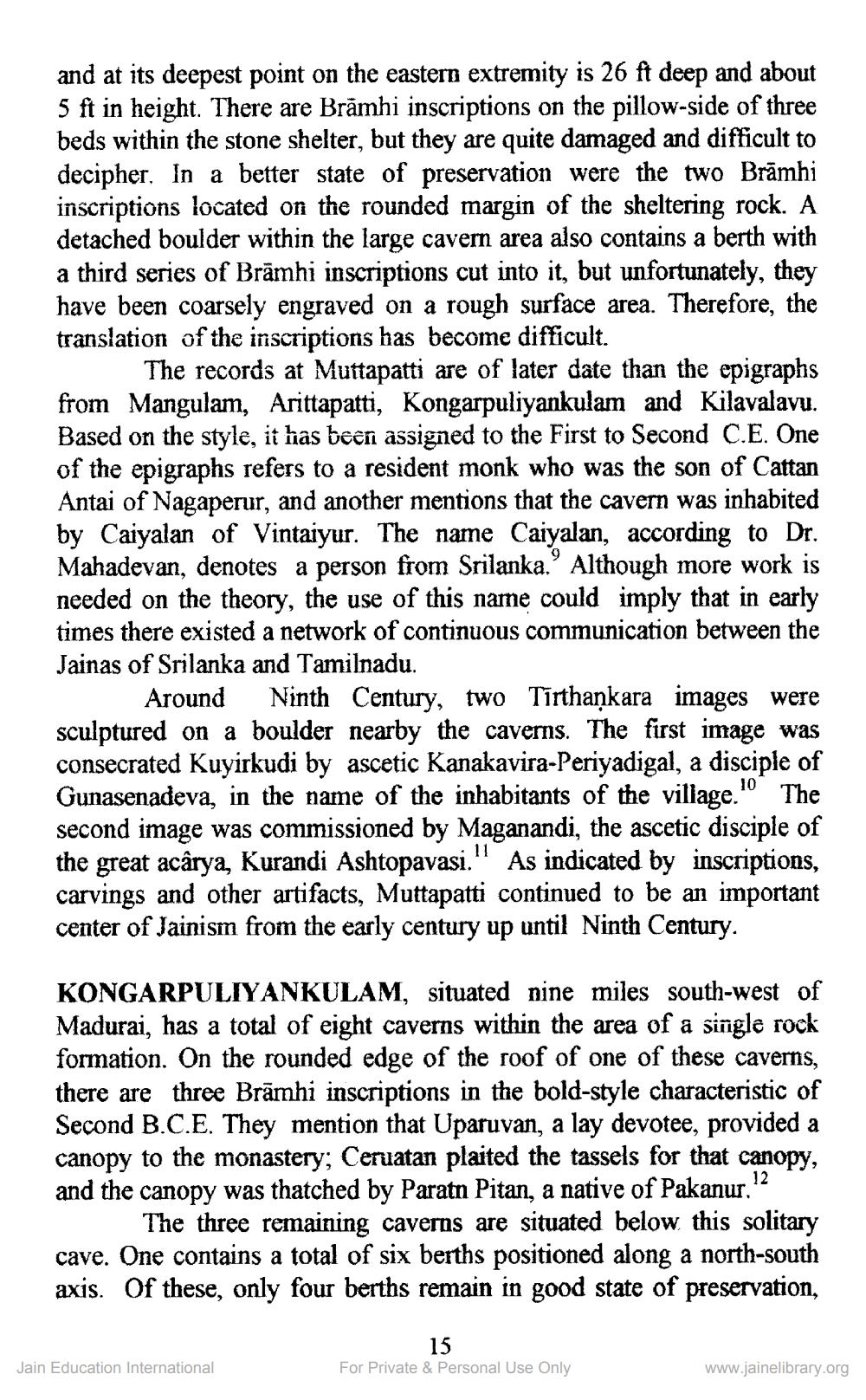________________
and at its deepest point on the eastern extremity is 26 ft deep and about 5 ft in height. There are Bramhi inscriptions on the pillow-side of three beds within the stone shelter, but they are quite damaged and difficult to decipher. In a better state of preservation were the two Brämhi inscriptions located on the rounded margin of the sheltering rock. A detached boulder within the large cavern area also contains a berth with a third series of Brämhi inscriptions cut into it, but unfortunately, they have been coarsely engraved on a rough surface area. Therefore, the translation of the inscriptions has become difficult.
The records at Muttapatti are of later date than the epigraphs from Mangulam, Arittapatti, Kongarpuliyankulam and Kilavalavu. Based on the style, it has been assigned to the First to Second C.E. One of the epigraphs refers to a resident monk who was the son of Cattan Antai of Nagaperur, and another mentions that the cavern was inhabited by Caiyalan of Vintaiyur. The name Caiyalan, according to Dr. Mahadevan, denotes a person from Srilanka." Although more work is needed on the theory, the use of this name could imply that in early times there existed a network of continuous communication between the Jainas of Srilanka and Tamilnadu.
10
Around Ninth Century, two Tirthankara images were sculptured on a boulder nearby the caverns. The first image was consecrated Kuyirkudi by ascetic Kanakavira-Periyadigal, a disciple of Gunasenadeva, in the name of the inhabitants of the village.' The second image was commissioned by Maganandi, the ascetic disciple of the great acârya, Kurandi Ashtopavasi. As indicated by inscriptions, carvings and other artifacts, Muttapatti continued to be an important center of Jainism from the early century up until Ninth Century.
11
KONGARPULIYANKULAM, situated nine miles south-west of Madurai, has a total of eight caverns within the area of a single rock formation. On the rounded edge of the roof of one of these caverns, there are three Bramhi inscriptions in the bold-style characteristic of Second B.C.E. They mention that Uparuvan, a lay devotee, provided a canopy to the monastery; Ceruatan plaited the tassels for that canopy, and the canopy was thatched by Paratn Pitan, a native of Pakanur.
12
The three remaining caverns are situated below this solitary cave. One contains a total of six berths positioned along a north-south axis. Of these, only four berths remain in good state of preservation,
Jain Education International
15
For Private & Personal Use Only
www.jainelibrary.org




